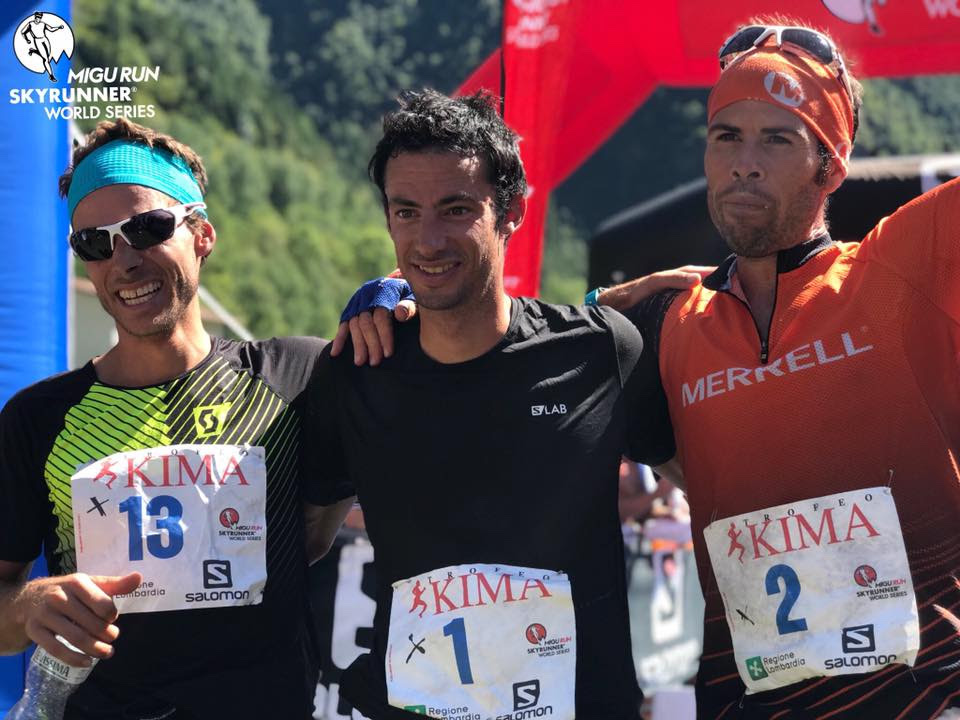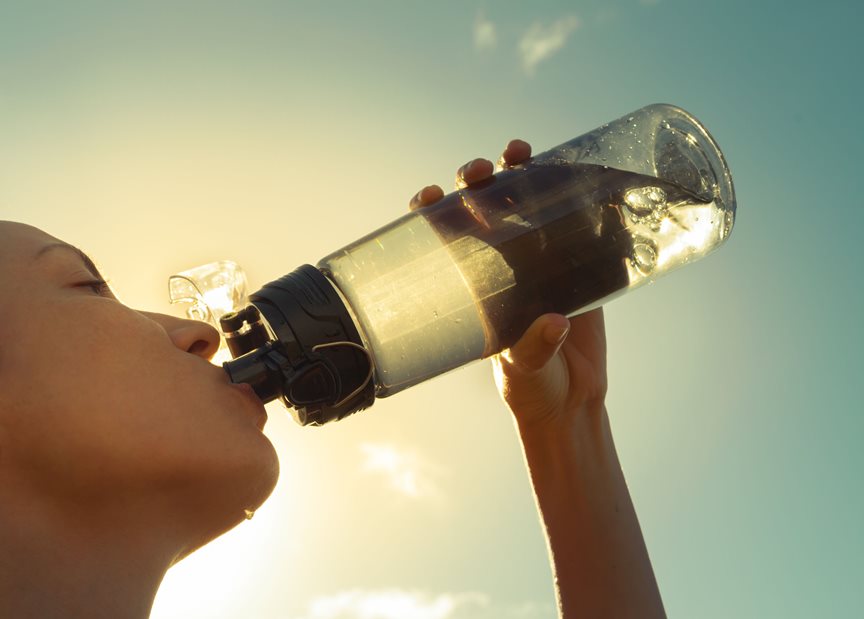Last updated: 06-Nov-18
By Luke Jarmey
One of the most esteemed runners we have had so far for our ‘Ultra of the Month Q&A’, William Sichel is a pure legend of ultra running. An international British and Scottish athlete, he has set multiple world records at various distances. Read on for an inspiring insight into this great runner.
Q. Who is William Sichel?
A. A 61-year-old husband, father and grandfather. Born in England, I moved to Orkney as a retired table tennis player in 1982. I wanted to start a new life as a small farmer, known as a crofter up here. I got married that year and started a family the next one. I had to build a house from scratch and start my small business. I did no sport or additional exercise for 10 years.
Q. When did you first start running Ultras and what motivated you?
A. In 1994. I started to feel that I could have some time off after I saw the 1992 London Marathon on TV. I decided to run round the block and have been running ever since!
The early races
Q. What distances did you start out at?
A. When I retired from my table tennis career I was living in Holland and was at a bit of a loose end. At that time (1981) the marathon boom was just coming over to Europe from the USA and I decided to fill my time by running a marathon. I did a very short training period of about 3 months and then travelled back to the UK for the Birmingham People’s Marathon in May. I ran 2:43:49 for 54th place. Only years later did I realise what an amazing debut that was!
My first race, after starting running again was the Hoy Half Marathon in 1992. Quickly followed by the Glasgow Half and then a return to marathons with the Black Isle Marathon. Remember that for me a race is a major undertaking involving boats, planes and anything from 1 – 3 days!
Q. You won your debut 100km, 24-hour, 72-hour, six-day and 7-day races. Incredibly impressive. What were the secrets to such rapid success?
A. Probably a number of ‘secrets’. I think a major factor, especially for the races longer than 24 hours, was that my stomach liked them better! I’d always had really bad stomach issues in 24-hour races (vomited in 29 out of 30, 24-hour races). When I went to longer races, where taking short breaks was part of the race plan, I was never sick again. The longer races allowed me to run to my full potential and simply suited me better mentally and physically.
Records
Q. So you’ve set ultra distance records at World, British and Scottish level. Which ones stand out for you the most?
A. Hmmm, difficult one. Probably the ones I’m most proud of are my overall British (518.34 miles – road) and Scottish records (532.36 miles – track) at 6 Days, and the longer ones up to 5000 km.
Q. Project 60@60. Tell us a bit about this, including the criteria and the final tally.
A. When competing regularly for GB and Scotland at the shorter ultras (100km and 24 hours) I had very clear targets and goals in my attempts to get selected for these teams. However, when one moves up beyond 24 hours it becomes very much an individual sport. I needed to redefine my goals and simply saying that I “wanted to set some records” didn’t really cut it for me. I needed something much more defined and measurable.
This was how my Project 60@60 came about. I set my own criteria but based the records on the most common times and distances in ultra running and in most cases there already existed records to go for. I also decided to adhere to the IAAF criteria of only allowing road, track and indoor records. The aim was to try and set 60 records before my 60th birthday on October 1st 2013. It seemed most audacious at the time. In fact I hit the target 10 months ahead of schedule!
Q. After finishing 60@60, what inspired you to create Project 165?
A. Because the Project 60@60 had gone so well for both myself and my sponsors, by providing a clear target and measurable achievement, I decided to extend it for another 5 years.
Q. How is that going?
A. Going better than expected again as I’m now on 158 records with 3½ years to go!
Training, nutrition and gear
Q. Do you tailor your training very specifically for certain races or have you got a base regime, which you modify slightly?
A. Actually both of these, with a basic regime of running and a very extensive programme of cross training which I have done since before the word existed. Then I will do very race specific training geared to the demands of the up-coming race. My whole training plan is very broad based and as the years go by and the number of miles raced is getting so high, the amount of cross training is increasing to support my running fitness.
Q. How do you fit training around your full time job selling Angora yarn?
A. Sometimes with difficulty but most of the time it works out well. I work from home in a very flexible way and I have my own Fitness Suite here at home and an extensive gym outside in another building so I’m very self-contained. I love treadmill training and that forms a very large part of my running.
Q. How are the Orkney Islands as a training base?
A. I live in an area of outstanding natural beauty and if I walk out the back door I can see 30 miles in all directions. However, the climate can be harsh and very cold, wet and windy in the winter – hence my indoor facilities! Having said that the roads are quiet and I have some great routes around my tiny island to keep me happy.
Q. You’re renown for taking on minimal nutrition during an event (100 cal/hour). Is this due to unique physiology or something you’ve conditioned yourself to accept?
A. My unique physiology. I perform best when I drink to thirst and eat when hungry, and when recorded accurately, for e.g. when I ran the 153-mile Spartathlon, my consumption averaged 100kcals/hours and I finished strongly. I often call myself a ‘fat burning machine’ and I really am. In last month’s Barry 40 Mile Track Race I took no fluid or calories and was able to speed up towards the end and voluntarily carried on to the 6-hour point to get another two records. I wasn’t trying to prove anything and I had drinks available – I just didn’t need anything.
I would say that nearly all my nutrition disasters in races, in the past, came because I was trying to be too clever and force down far, far more than I needed. I now have the confidence to listen to my own body and its requirements.
Q. Do you have a special diet plan?
A. In normal life my diet is pretty high in good fats and I have just two meals a day.
Q. Though you have numerous sponsors, when running at your level the gear still has to be the ultimate fit for your body and style. Did you approach certain brands?
A. I’ve always been a customer first and then if I really liked the product and the brand I’ve then approached them to discuss sponsorship. I enjoy building a relationship with a company and then working with them to promote their products and services – it’s not just about getting free stuff.
Q. What’s your favourite all time bit of running gear? Do you adhere to minimal, maximal or traditional styles of footwear? Or do you use certain styles for particular events?
A. In normal life I wear minimalist footwear and occasionally run barefoot on the treadmill. However, in races I wear the maximalist HOKA shoes for fit and comfort. When you are running really long I have found nothing better than these.
Sri Chinmoy Self-Transcendence 3100 Mile Race
Q. Billed as the world’s longest certified footrace, you ran this last year with some amazing results. Where did you finish and what records did you break?
A. I was 5th man, 6th overall and first over 60. In fact I was the first person over 60 to finish the race – ever – in all its 18-year history. I set 53 records in this event including overall GB, Scottish and World age-group records right up to 5000 km – so I had quite a summer!
Q. Would you consider it the toughest race you’ve ran?
A. Yes. The sheer insane duration and the repetitive short laps on busy city streets took their toll both mentally and physically. I had to run a big negative split just to finish inside the time limit, which took an incredible effort.
Q. How hard was it mentally running for 50 days? How did you deal with this?
A. Amazingly, physically I got used to the demands of the event (the need to run an average of 60 miles a day, minimum), my body adapted very well and I started running further and further each day as the race progressed. But mentally I found it to be the most enormous struggle especially when things were going against me and it looked like I wouldn’t finish in time. To regain mental control I had to narrow my focus right down to just being aware of my breathing, only thinking of the next lap and never, ever thinking past the current day! Simple as that.
The Future
Q. What races are you currently training for?
A. As mentioned I opened my season by turning the clock back 12 years and returned to the Barry 40 on March 8th. I’m off to Hungary in May for the 6 Day World Trophy; to Ladak/India in August for the World’s Highest Ultra (18000 feet); Tooting in September for the Sri Chinmoy 24 hour race and Norway in November for the Bislett International Indoor Endurance Festival 48 Hour race. So plenty to keep me busy!
Thanks William!
Run Well!
For more information about William Sichel visit his website here.
A Run Ultra article by Ian Corless: read more about the 2014 Sri Chinmoy Self-Transcendence 3100 Mile Race and William Sichel here.





